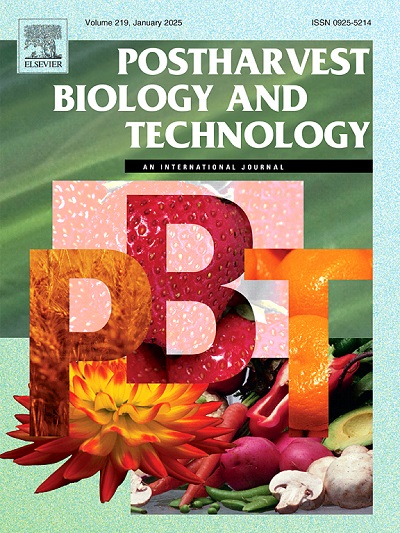Transcription factor AcAGL9 and AcBEH1 synergistically regulate carotenoid biosynthesis during pineapple fruit ripening
IF 6.4
1区 农林科学
Q1 AGRONOMY
引用次数: 0
Abstract
Pineapple fruit ripening is closely associated with carotenoid biosynthesis, which is crucial for color development and contributes to the fruit's overall quality. However, the transcriptional mechanisms driving carotenoid biosynthesis in pineapple remain largely unexplored. In this study, we identify a MADS-box transcription factor, AcAGL9, as a positive regulator of carotenoid biosynthesis in pineapple. Biochemical analyses demonstrate that AcAGL9 activates the expression of carotenogenic genes (AcPSY, AcPDS, AcCRTISO, and AcLCYB) by directly binding to CArG-elements in their promoters. Additionally, AcAGL9 physically interacts with the positive regulator AcBEH1, synergistically enhancing the expression of these carotenogenic genes. Silencing AcAGL9 or AcBEH1 in pineapple fruit reduces the expression of carotenoid biosynthesis genes and inhibits carotenoid accumulation, while overexpression has the opposite effect. Co-silencing or co-overexpression of both AcAGL9 and AcBEH1 produces an even more pronounced impact. Collectively, our study highlights the critical role of the AcAGL9-AcBEH1 module in regulating carotenoid accumulation in pineapple fruit.
求助全文
约1分钟内获得全文
求助全文
来源期刊

Postharvest Biology and Technology
农林科学-农艺学
CiteScore
12.00
自引率
11.40%
发文量
309
审稿时长
38 days
期刊介绍:
The journal is devoted exclusively to the publication of original papers, review articles and frontiers articles on biological and technological postharvest research. This includes the areas of postharvest storage, treatments and underpinning mechanisms, quality evaluation, packaging, handling and distribution of fresh horticultural crops including fruit, vegetables, flowers and nuts, but excluding grains, seeds and forages.
Papers reporting novel insights from fundamental and interdisciplinary research will be particularly encouraged. These disciplines include systems biology, bioinformatics, entomology, plant physiology, plant pathology, (bio)chemistry, engineering, modelling, and technologies for nondestructive testing.
Manuscripts on fresh food crops that will be further processed after postharvest storage, or on food processes beyond refrigeration, packaging and minimal processing will not be considered.
 求助内容:
求助内容: 应助结果提醒方式:
应助结果提醒方式:


